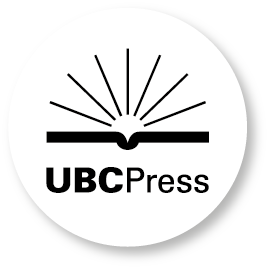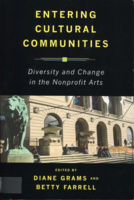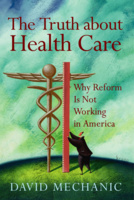Rebels All!
Rebels All! A Short History of the Conservative Mind in Postwar America
Do Butterflies Bite?
Fascinating Answers to Questions about Butterflies and Moths
Screening Genders
The American Science Fiction Film
The first comprehensive overview of the history of gender theory in film, this book is an ideal text for courses and will serve as a foundation for further discussion among students and scholars alike.
Mama, PhD
Women Write about Motherhood and Academic Life
Understanding the Arts and Creative Sector in the United States
The Brooklyn Bridge
A Cultural History
Hailed by some as the Eighth Wonder of the World when it opened in 1883, the Brooklyn Bridge is one of the world’s most recognizable and beloved icons. Despite its impressive physical presence, however, Brooklyn’s grand old bridge is much more than a testament of engineering and architectural achievement. As Richard Haw shows in this first of its kind cultural history, the Brooklyn Bridge owes as much to the
The American New Woman Revisited
A Reader, 1894-1930
In North America between 1894 and 1930, the rise of the “New Woman” sparked controversy on both sides of the Atlantic and around the world. As she demanded a public voice as well as private fulfillment through work, education, and politics, American journalists debated and defined her. Who was she and where did she come from? Was she to be celebrated as the agent of progress or reviled as a traitor to the traditional family? Over time, the dominant version of the American New Woman became typified as white, educated, and middle class: the suffragist, progressive reformer, and bloomer-wearing bicyclist. By the 1920s, the jazz-dancing flapper epitomized her. Yet she also had many other faces.
Bringing together a diverse range of essays from the periodical press of the late nineteenth and early twentieth centuries, Martha H. Patterson shows how the New Woman differed according to region, class, politics, race, ethnicity, and historical circumstance. In addition to the New Woman’s prevailing incarnations, she appears here as a gun-wielding heroine, imperialist symbol, assimilationist icon, entrepreneur, socialist, anarchist, thief, vamp, and eugenicist. Together, these readings redefine our understanding of the New Woman and her cultural impact.
The Contested Boundaries of American Public Health
The Horse Who Drank the Sky
Film Experience Beyond Narrative and Theory
By looking at point of view, the gaze, the voice from nowhere, diegesis and its discontents, ideology, the system of the apparatus, invisible editing, and the technique of overlapping sound, he argues that it is often the minuscule or transitional moments in motion pictures that penetrate most deeply into viewers' experiences. In films that include Rebel Without a Cause, Dead Man, Chinatown, The Graduate, North by Northwest, Dinner at Eight, Jaws, M, Stage Fright, Saturday Night Fever, The Band Wagon, The Bourne Identity, and dozens more, Pomerance invokes complexities that many of the best of critics have rarely tackled and opens a revealing view of some of the most astonishing moments in cinema.
Entering Cultural Communities
Diversity and Change in the Nonprofit Arts
The chapters in this book draw on interviews with leaders, staff, volunteers, and audience members from eighty-five nonprofit cultural organizations to explore how they are trying to increase participation and the extent to which they have been successful. The insiders' accounts point to the opportunities and challenges involved in such efforts, from the reinvention of programs and creation of new activities, to the addition of new departments and staff dynamics, to partnerships with new groups. The authors differentiate between "relational" and "transactional" practices, the former term describing efforts to build connections with local communities and the latter describing efforts to create new consumer markets for cultural products. In both cases, arts leaders report that, although positive results are difficult to measure conclusively, long-term efforts bring better outcomes than short-term activities.
The organizations discussed include large, medium, and small nonprofits located in urban, suburban, and rural areas—from large institutions such as the Smithsonian, the Walker Art Center, the Museum of Fine Arts Houston, and the San Francisco Symphony to many cultural organizations that are smaller, but often known nationally for their innovative work, such as AS220, The Loft Literary Center, Armory Center for the Arts, Appalshop, and the Western Folklife Center.
Youth, Crime, and Justice
A Global Inquiry
Environmental Policy Analysis and Practice
In Environmental Policy Analysis and Practice, Michael R. Greenberg cuts through the complicated layers of bureaucracy, science, and the public interest to show how all policy considerations can be broken down according to six specific factors: 1) the reaction of elected government officials, 2) the reactions of the public and special interests, 3) knowledge developed by scientists and engineers, 4) economics, 5) ethical imperatives, and 6) time pressure to make a decision.
Our Marvelous Bodies
An Introduction to the Physiology of Human Health
Strange Bedfellows
How Late-Night Comedy Turns Democracy into a Joke
No Minor Accomplishment
The Revival of New Jersey Professional Baseball
Autobiography of an Androgyne
For Better or For Worse
Vietnamese International Marriages in the New Global Economy
Dying Swans and Madmen
Ballet, the Body, and Narrative Cinema
Holy Prayers in a Horse's Ear
A Japanese American Memoir
Originally published in 1932, Kathleen Tamagawa’s pioneering Asian American memoir is a sensitive and thoughtful look at the personal and social complexities of growing up racially mixed during the early twentieth century. Born in 1893 to an Irish American mother and a Japanese father and raised in Chicago and Japan, Tamagawa reflects on the difficulty she experienced fitting into either parent’s native culture.
American Cinema of the 1960s
Themes and Variations
Snowshoeing Through Sewers
Adventures in New York City, New Jersey, and Philadelphia
Public Health
The Development of a Discipline, From the Age of Hippocrates to the Progressive Era
The editors provide annotated readings and biographical details to punctuate the historical timeline and to provide students with insights into the progression of ideas, initiatives, and reforms in the field. From Hippocrates and John Graunt in the early period, to John Snow and Florence Nightingale during the nineteenth-century sanitary reform movement, to Upton Sinclair and Margaret Sanger in the Progressive Era, readers follow the identification, evolution, and implementation of public health concepts as they came together under one discipline.
Finding Faith
The Spiritual Quest of the Post-Boomer Generation
500 Years of Chicana Women's History / 500 Años de la Mujer Chicana
Bilingual Edition
The history of Mexican Americans spans more than five centuries and varies from region to region across the United States. Yet most of our history books devote at most a chapter to Chicano history, with even less attention to the story of Chicanas. 500 Years of Chicana Women’s History offers a powerful antidote to this omission with a vivid, pictorial account of struggle and survival, resilience and achievement, discrimination and identity. The bilingual text, along with hundreds of photos and other images, ranges from female-centered stories of pre-Columbian Mexico to profiles of contemporary social justice activists, labor leaders, youth organizers, artists, and environmentalists, among others. With a distinguished, seventeen-member advisory board, the book presents a remarkable combination of scholarship and youthful appeal.
Pump and Dump
The Rancid Rules of the New Economy
In Pump and Dump: The Rancid Rules of the New Economy,Robert H. Tillman and Michael L. Indergaard argue that these scandals are symptoms of a corporate governance problem that began in the 1990s as New Economy pundits claimed that advances in technology and forms of business organization were changing the rules.
Policing Dissent
Social Control and the Anti-Globalization Movement
Millennial Makeover
MySpace, YouTube, and the Future of American Politics
Forensics Under Fire
Are Bad Science and Dueling Experts Corrupting Criminal Justice?
The American public has become captivated by success stories like this one with their satisfyingly definitive conclusions, all made possible because of the wonders of forensic science. Unfortunately, however, popular television dramas do not represent the way most homicide cases in the United States are actually handled. Crime scenes are not always protected from contamination; physical evidence is often packaged improperly, lost, or left unaccounted for; forensic experts are not always consulted; and mistakes and omissions on the autopsy table frequently cut investigations short or send detectives down the wrong investigative path.
In Forensics Under Fire, Jim Fisher makes a compelling case that these and other problems in the practice of forensic science allow offenders to escape justice and can also lead to the imprisonment of innocent people. Bringing together examples from a host of high-profile criminal cases and familiar figures, such as the JonBenet Ramsey case and Dr. Henry Lee who presented physical evidence in the O. J. Simpson trial, along with many lesser known but fascinating stories, Fisher presents daunting evidence that forensic science has a long way to go before it lives up to its potential and the public's expectations.
Visions and Divisions
American Immigration Literature, 1870-1930
From these debates came such novels as Willa Cather’s My Ántonia and Upton Sinclair’s The Jungle. Henry James, Charlotte Perkins Gilman, and Carl Sandburg added to the diversity of viewpoints of native born Americans while equally divergent immigrant perspectives were represented by writers such as Anzia Yezierska, Kahlil Gibran, and Claude McKay. This anthology presents the writing of these authors, among others less well known, to show the many ways literature participated in shaping the face of immigration. The volume also includes an introduction, annotations, a timeline, and historical documents that contextualize the literature.
The Truth About Health Care
Why Reform is Not Working in America
The Traffic In Poems
Nineteenth-Century Poetry and Transatlantic Exchange
Neither Villain nor Victim
Empowerment and Agency among Women Substance Abusers
Female drug addicts are often stereotyped either as promiscuous, lazy, and selfish, or as weak, scared, and trapped into addiction. These depictions typify the "pathology and powerlessness" narrative that has historically characterized popular and academic conversations about female substance abusers. Neither Villain Nor Victim attempts to correct these polarizing perspectives by presenting a critical feminist analysis of the drug world. By shifting the discussion to one centered on women's agency and empowerment, this book reveals the complex experiences and social relationships of women addicts.
Designing Modern Childhoods
History, Space, and the Material Culture of Children
Trees, Truffles, and Beasts
How Forests Function
Theorizing Scriptures
New Critical Orientations to a Cultural Phenomenon
Historically, religious scriptures are defined as holy texts that are considered to be beyond the abilities of the layperson to interpret. Their content is most frequently analyzed by clerics who do not question the underlying political or social implications of the text, but use the writing to convey messages to their congregations about how to live a holy existence. In this innovative collection of essays that aims to turn the traditional bible-study definition of scriptures on its head, Vincent L. Wimbush leads an in-depth look at the social, cultural, and racial meanings invested in these texts.
'Un-American' Hollywood
Politics and Film in the Blacklist Era
Original essays scrutinize the work of individual practitioners, such as Robert Rossen, Joseph Losey, Jules Dassin, and Edward Dmytryk, and examine key films, including The Robe, Christ in Concrete, The House I Live In, The Lawless, The Naked City, The Prowler, Body and Soul, and FTA.
Conversion of a Continent
Contemporary Religious Change in Latin America
The Practice of U.S. Women's History
Narratives, Intersections, and Dialogues
In this collection of seventeen original essays on women’s lives from the colonial period to the present, contributors take the competing forces of race, gender, class, sexuality, religion, and region into account. Among many other examples, they examine how conceptions of gender shaped government officials’ attitudes towards East Asian immigrants; how race and gender inequality pervaded the welfare state; and how color and class shaped Mexican American women’s mobilization for civil and labor rights.
Rutgers Football
A Gridiron Tradition in Scarlet
You Shall Tell Your Children
Holocaust Memory in American Passover Ritual
Utopia, New Jersey
Travels in the Nearest Eden
Hindu Primary Sources
A Sectarian Reader
Notorious New Jersey
100 True Tales of Murders and Mobsters, Scandals and Scoundrels
Genetic Witness
Science, Law, and Controversy in the Making of DNA Profiling
Yet, this promise took ten turbulent years to be fulfilled. In Genetic Witness, Jay D. Aronson uncovers the dramatic early history of DNA profiling that has been obscured by the technique’s recent success.
Tuberculosis and the Politics of Exclusion
A History of Public Health and Migration to Los Angeles
Abel’s revealing account provides a critical lens through which to view both the contemporary debate about immigration and the U.S. response to the emergent global tuberculosis epidemic.
Hemispheric American Studies
The Many Colors of Hinduism
A Thematic-Historical Introduction
The Many Colors of Hinduism is the first introductory text to provide a balanced view of this rich religious tradition, acknowledging the full range of its many competing and even contradictory aspects. Utilizing a thematic-historical approach, Carl Olson draws on a wide array of textual evidence, the fieldwork of anthropologists in close contact with insiders, and voices of thinkers ranging from Indologist Alf Hiltebeitel to Cambridge scholar Julius Lipner. The result is a narrative approach that offers a view of Hinduism that emulates the storytelling nature of the religion itself.














































